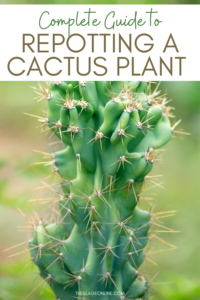Identifying the type of cactus you have can seem like a daunting task, particularly given the vast diversity within the family Cactaceae. Cacti exhibit a fascinating range of shapes, sizes, colors, and characteristics, and many can be easy to confuse. This guide serves as a valuable tool for understanding how to precisely identify your cactus, ensuring you can care for it effectively and appreciate its unique beauty.
Let’s embark on this exploratory journey into the realm of cacti, equipping you with straightforward yet comprehensive identification tips.
Recognizing the Basic Types of Cacti
The first step in identifying your cactus involves understanding the primary categories into which these remarkable plants are divided. Broadly, cacti can be classified into three groups: the columnar, the globular, and the epiphytic types.
Columnar Cacti
Columnar cacti are characterized by their tall, upright growth patterns, which can reach impressive heights. Iconic members of this group include the Saguaro (Carnegiea gigantea) and the Organ Pipe Cactus (Stenocereus thurberi). Columnar cacti typically have multiple branches extending from a central trunk, providing a striking silhouette. When observing this type, note the presence of spines, which can vary in density and length, often arranged in distinct clusters along the ribs of the cactus body.
Globular Cacti
The next category encompasses globular cacti, which are generally round and squat, resembling small, spiky green balls. These varieties, such as the Barrel Cactus (Ferocactus) and the Golden Barrel Cactus (Echinocactus grusonii), are frequently found in arid landscapes. Their distinctive ribbed appearances—usually adorned with sharp spines—enable them to store water efficiently, a crucial survival adaptation. Focus on their size and shape; globular cacti can grow quite large, but they often maintain a spherical profile.
Epiphytic Cacti
Epiphytic cacti diverge dramatically from traditional desert-dwelling species. Unlike their terrestrial counterparts, they thrive in rainforest environments, growing on trees and other surfaces. One of the most recognizable examples is the Christmas Cactus (Schlumbergera). These plants typically feature flattened, leaf-like pads and can exhibit spectacular blooms during the holidays. Epiphytic cacti usually require more humidity than their desert relatives, so identifying their habit can assist in providing appropriate care.
Differentiating Features to Observe
Once you’ve recognized the overarching category your cactus falls into, you can delve deeper into specific identification through a few key features. This section highlights crucial characteristics that aid in species identification.
Spine Structure
Spines serve as a principal identifying feature across cactus species. They can be long, short, or even hair-like. Pay close attention to their color, length, and arrangement. Some cacti, such as the Fishhook Barrel Cactus (Ferocactus wislizeni), are known for distinctive hooked spines. Others might have spines that come in varied colors, from white to a vibrant red. Each species showcases unique spine adaptations, thus, taking time to examine these structures can lead you closer to accurate identification.
Flowering Traits
Flowers provide another essential aspect in distinguishing among cactus species. Many cacti bloom once or twice a year, producing flowers in a range of vibrant colors and forms. The timing of these blooms can also be a telling sign; for instance, the Easter Cactus (Hatiora gaertneri) typically flowers in the spring. Observe the size, color, and the structure of the flowers—whether they unfold from the tips or the sides of the cactus body can be a crucial detail in distinguishing between closely related species.
Body Structure and Shape
The body shape and structure can also offer insight into the type of cactus you may have. For example, the distinctive ribs on a regular cactus (like the Saguaro) can assist in differentiating it from smooth-bodied varieties. Take note of any unique features, such as lobes or wavy edges. Always consider growth patterns, as well; many cacti can develop unique forms based on their growing conditions and surroundings.
Caring for Your Cactus
Now that you can identify your cactus, attention must turn to its care. Cacti, once properly identified, will thrive under appropriate environmental conditions. Evaluate their light requirements, as most cacti prefer bright, direct sunlight. Water needs vary significantly; overwatering can lead to root rot, while under-watering might cause shriveling.
Consider the soil composition, too. A well-draining soil mix tailored for cacti can help to prevent water retention, which is vital for these desert dwellers. Lastly, remember that conditions like temperature and humidity should align with the natural habitat of your cactus type to ensure optimal growth.
Conclusion
Identifying your cactus can be both an informative and gratifying experience. By understanding the basic categories, differentiating features, and appropriate care for your species, you not only deepen your appreciation for these captivating plants but also enhance their longevity in your home. Whether you are a novice or an experienced collector, taking the time to understand what kind of cactus you have offers vital insights into nurturing your prickly companion.





Leave a Comment